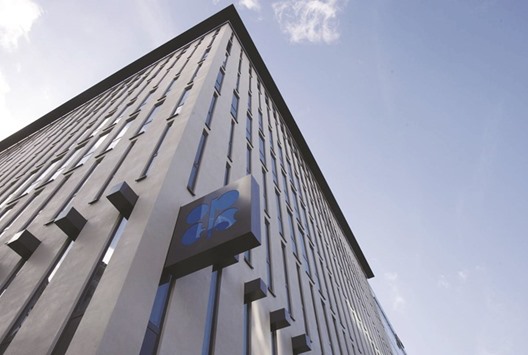Business
Qatar’s breakeven oil price of $60 at least 13% lower than GCC average, says IIF
Qatar’s breakeven oil price of $60 at least 13% lower than GCC average, says IIF
October 23, 2016 | 09:43 PM


Qatar’s fiscal breakeven oil price of $60 a barrel this year is at least 13% lower than the Gulf Cooperation Council (GCC) average but higher than that of Kuwait and the UAE, according to the Institute of International Finance (IIF).“The significant cut in spending has reduced fiscal breakeven oil prices in all (the Gulf) countries,” Washington-based IIF said, highlighting that the weighted average fiscal breakeven price of oil for the GCC is expected to decline steadily from a peak of $87 in 2014 to $66 by 2017.The fiscal breakeven for Qatar is $60 this year and $63 in 2017 against the GCC average of $69 and $66 respectively. It is $52 and $49 for Kuwait and $56 and $55 for the UAE.The highest breakeven price is seen for Bahrain, where it will be $105 this year and $103 in 2017; followed by Oman ($87 and $85) and Saudi Arabia ($77 and $72), IIF estimates show.For the non-GCC part of the Organisation of the Petroleum Exporting Countries (Opec) like Iraq, the breakeven price is $65 this year and $60 in 2017; while it is the same for Iran and $89 and $82 for Algeria.In late September, Opec members reached a provisional deal to freeze or cut production to reduce the glut in global supply of crude oil.However, no official cut will take place until the producers’ group’s November formal meeting. This agreement marks the first action by Opec to bolster crude oil prices since the collapse that began in June 2014.It also signals a change in the Saudi Arabia-led Opec strategy of increasing market share and put pressure on high-cost non-Opec producers, IIF said, adding Saudi Arabia’s shift in strategy comes as the country faces severe fiscal adjustment.“The continuing decline in production costs in the most efficient fields in the US shale, the swing producer in the global oil market, will limit the risk of a more pronounced upward shift in prices,” it said.At the same time, the risk of downside surprises has declined as state oil producers have shown more willingness to freeze production if needed to protect revenues, while the collapse of long-term oil investments is capping potential production increases in coming years, it said.Opec’s production is gradually coming close to maximum capacity and a freeze or a small cut is likely in the next few months, said IIF, expecting oil prices to average $46 in 2016 and $53 in 2017.With the exception of Libya, there is “limited room” to increase production significantly by Opec members. Also, non-Opec production may continue to decline beyond 2017. But production costs, which is often proxied by breakeven prices have gone down, particularly in North America, suggesting that recovery in oil prices will be gradual and is unlikely to exceed $60 by 2020, according to IIF.
October 23, 2016 | 09:43 PM
